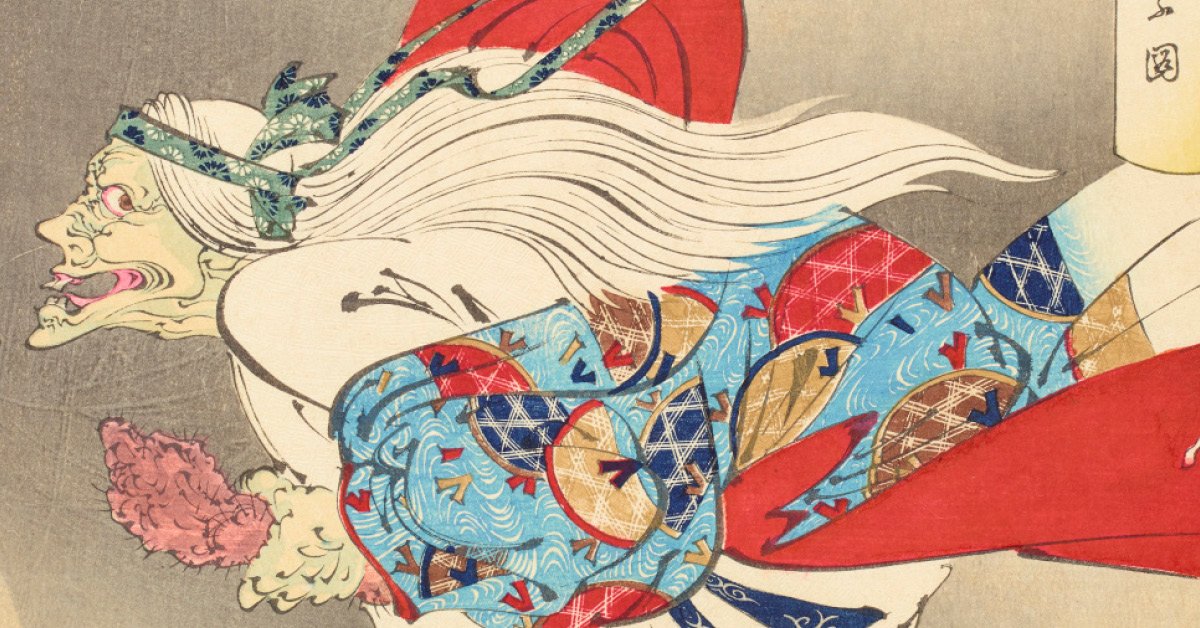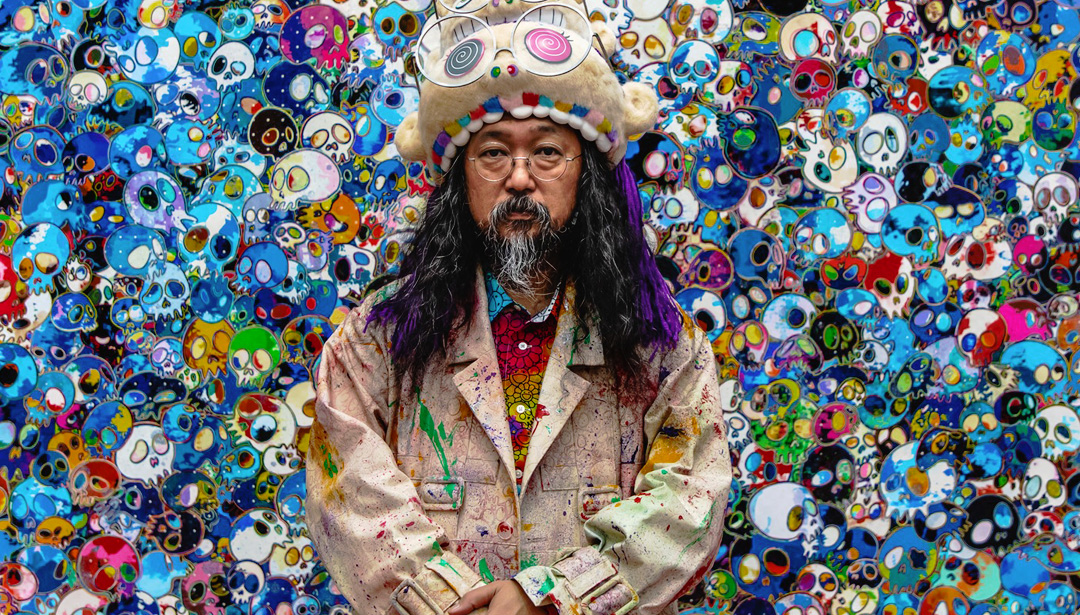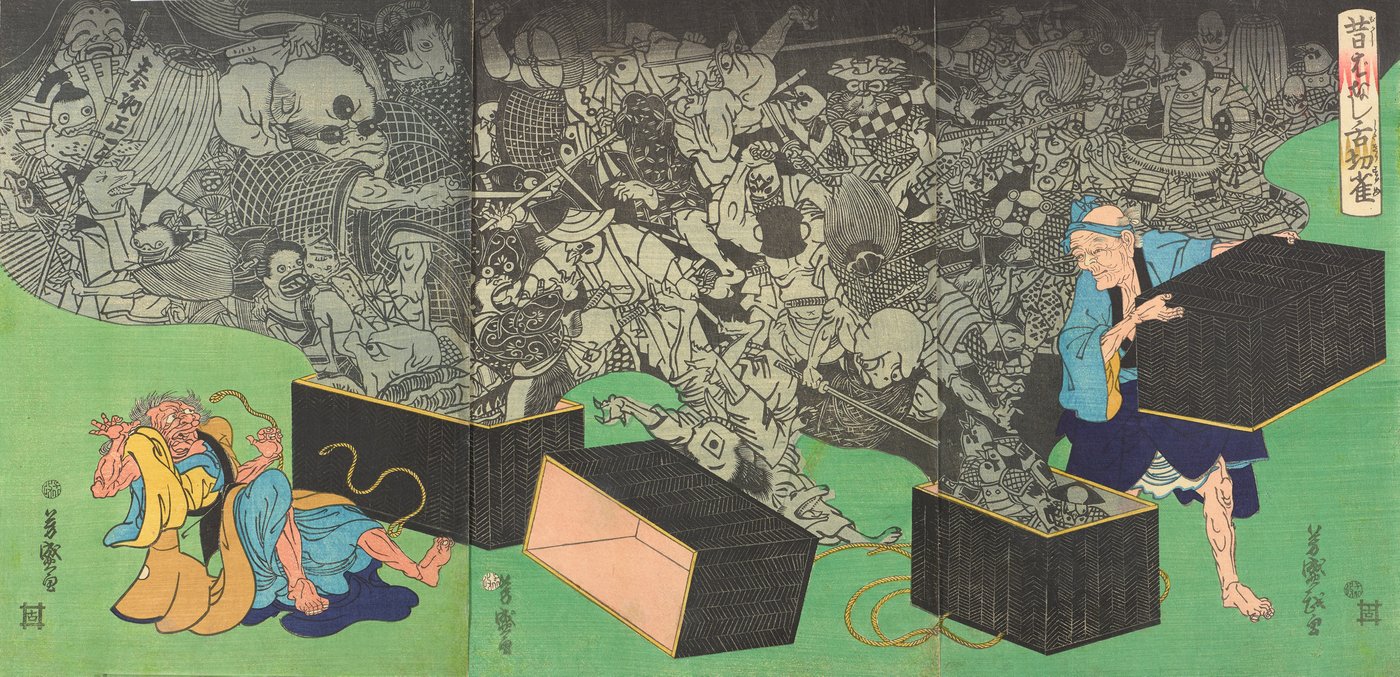If you are a big fan of Japanese art consisting of unsettling and fascinating ghosts and demons and the animated films of Studio Ghibli then the latest exhibition titled Japan Supernatural at the Art Gallery of New South Wales has got you covered this summer.

The exhibition Japan Supernatural officially commenced at the beginning of November and is on show till the 8th of March, 2020. The NSW Art Gallery is hoping to transport audiences into another world like never before, with over 180 imaginative works by Japanese artists past and present showcasing Japanese folklore, spirituality and its supernatural culture.
What’s interesting about this exhibition is that it is giving Western audiences in Australia a rare opportunity to look into prominent historical periods in Japan – from the Edo Period (1603-1880) to the 21st century where contemporary Japanese artists are having a resurgence of creating artworks influenced by Japanese folklore.
Featuring Japanese works by notable historical artists including Katsushika Hokusai, Utagawa Kuniyoshi and Tsukioka Yoshitoshi, alongside contemporary artists such as Chiho Aoshima, Fuyuko Matsui and Miwa Yanagi and Sydney based artist Kentaro Yoshida.
Japanese Supernatural Folklore: Yūrei & Yōkai

Japan’s artistic history shares a tight connection with their country’s cultural folklore. The supernatural aspect of Japanese folklore has a special importance shaping the pop culture and social underpinnings of Japan.
In an nutshell, Japanese supernatural beings are most often described as yōkai, while ghosts are called yūrei. Some yōkai are monstrous towards living beings, others take human or animal form, and many are objects that have come to life. The mysteriousness surrounding yōkai characters is that they are unpredictable. Stories of these mystical creatures add a richness and sense of wonder to the normalities and abnormalities of daily life in Japanese folklore, the characters are there to help us explain unusual events and experiences.
Yōkai and Takashi Murakami

The main artist and centerpiece for this exhibition is the whimsical Japanese artist Takashi Murakami.
To some critics Murakami has been called the “Warhol of Japan”. Born in 1962, Murakami is one of the most important artists who have come out of post-war Asia, and has dominated the pop culture scene in the 21st century. Murakami’s work is known for blending fine art and popular culture, boldly constructing graphic and colorful textures into an anime and manga cartoon style. Murakami’s output includes paintings, sculptures, drawings, animations, and collaborations with music artists such as Kanye West and Billie Eillish and fashion brands such as Louis Vuitton.
One example of blending in the artistic form of the Edo Period with the contemporary manga style can be seen on Murakami’s Instagram page:
Murakami became famous in the 1990’s for his “Superflat” form, an artistic concept that empahsises on the two dimensional art forms on Japanese manga, anime and fine arts which expresses the shallow emptiness of Japanese consumer culture.
Telling TimeOut:
“Initially, when I started using the word, it was about the visual; how as opposed to the western 3D composition of a painting, Japanese painting really had these multiple points of view and a painting structure that was flat. But I gradually started coming to think that the social structure and the dynamism that formed the structure is the superflat. Now I think more about the social aspect of superflat.”
In speaking with TimeOut Magazine, Murakami asserted that using characters from Japanese folklore in his work is not designed to challenge any sort of cultural hierarchy, “I’ve just made those motifs much bigger and now that’s in a museum. So it happens to become high art. But I’m not consciously working on that dichotomy anymore.”
There is a connection that is shared between yōkai and Murakami concerning their own contextual background and their popularity.
Yōkai ceased in popularity during the late 1800s, when the country began to embrace scientific thought, superstition was forgotten. It wasn’t until the 1960s, where Japan was regaining their national identity in post WWII and where the Japanese graphical art form known as Manga rose to prominence. The folkloric elements of yōkai was popular again among the new generation of Japanese audiences.

Murakami says, “My name is bad in Japan. Too erotic, or something like that.” It seems that Japanese audiences have yet to understand the potential Murakami is creating.
Murakami’s French representative, Emmanuel Perrotin, says, “Takashi is not only the most important Japanese artist of the Heisei Era (the reign of Japanese Emperor Akihito 1989-2019) — he will be the most important of the next era, too.”
Despite his ill-reception of his home audience, Murakami has embraced audiences of the west who have been obsessed with his art since the 2000’s.
Telling the Sydney Morning Herald, Murakami likes the notion of making an income from a certain Western fantasy of his country. “The offers to collaborate have always come from the other side,” he has said. “What the West is looking for in Japan is something more than the very artificial, Hollywood, over-the-top Japan. I offer the middle ground, something that is just the right temperature for Western audiences.”
Where Murakami is coming from is how Western audiences are obsessed and fascinated by a hybridised notion of Japanese pop culture demonstrated through the likes of Pokemon, and films by Studio Ghibli such as Spirited Away or a dynamic mix of western and eastern culture that is set in a futuristic sci-fi/cyberpunk setting such as Ghost In The Shell and Akira.
Murakami is aiming to connect a once forgotten historical art form with a modern appropriation of his own.

The most engaging aspect of this exhibition is how the old historical works give off a macabre of mysticism and surprise, giving off an authentic substance of Japan’s historical folklore and how this is appropriated in the works of today. The power of these artworks of the Japanese supernatural tells stories concerning fate and understandings of the human psyche.
Don’t pass this rare opportunity at the Art Gallery of New South Wales to visit an imaginative place where you can interact within a place inhabited by spirits, demons and ghosts.
Japan Supernatural is at the Art Gallery of NSW until March 8.
Subscribe to FIB’s newsletter for your weekly dose of music, fashion and pop culture news!







